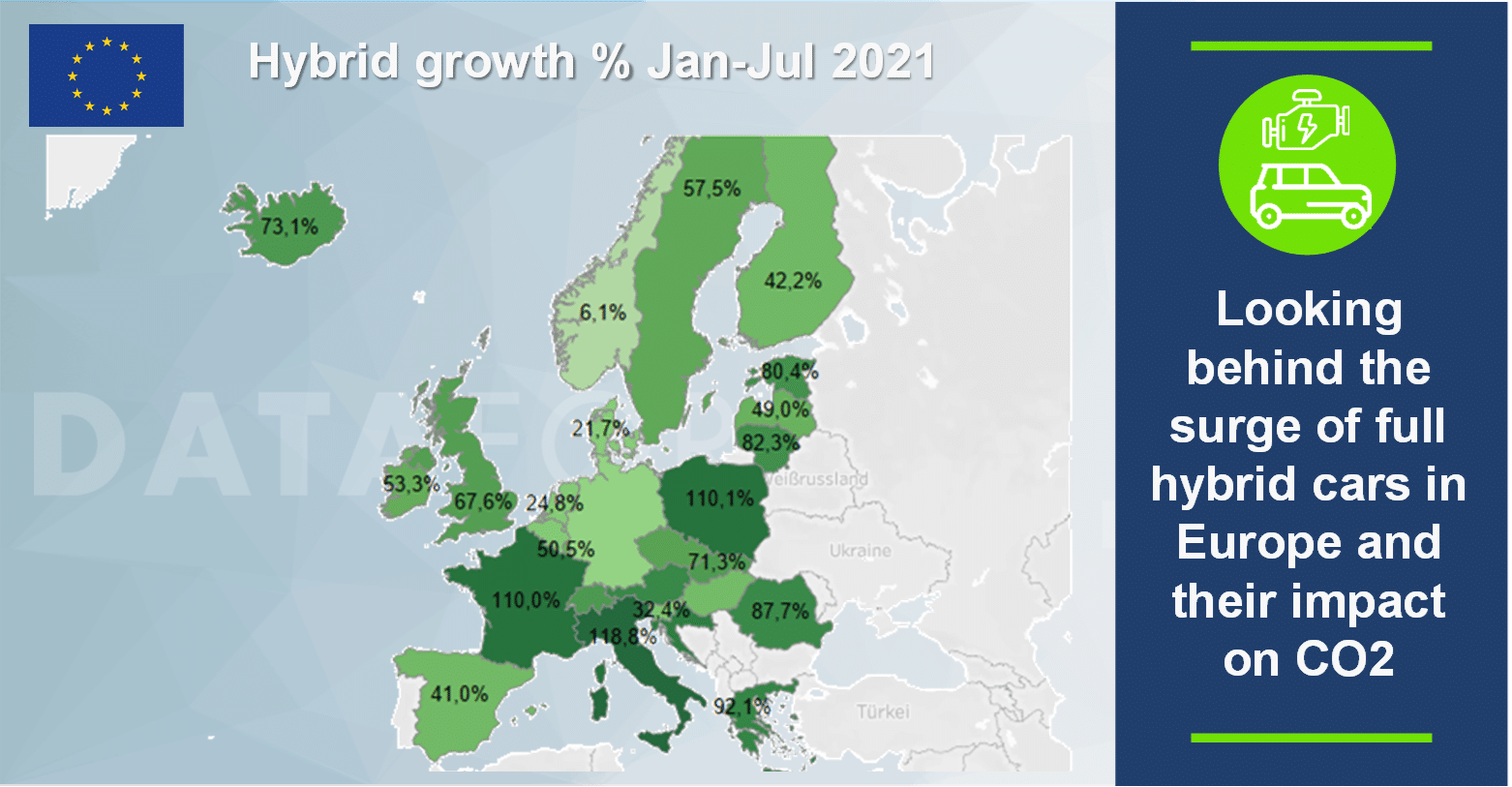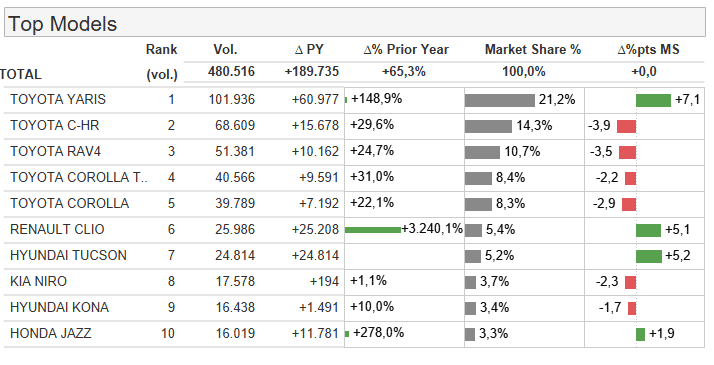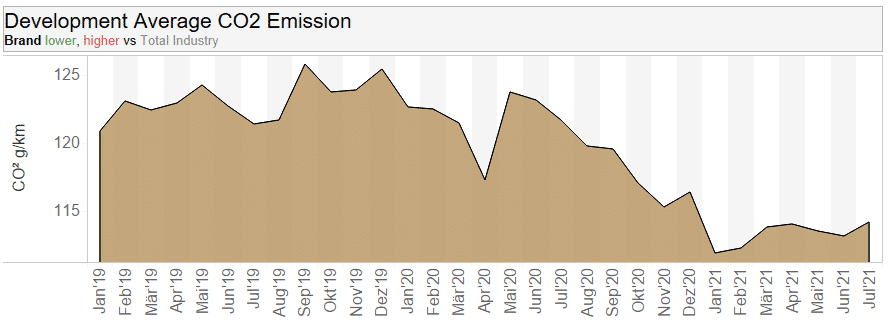While climate change is showing its impact all over Europe this summer, the European car market is in the middle of a transformation toward full electric vehicles. The growing footprint of electric cars helps reduce the level of atmospheric carbon dioxide emissions. However, this focus on BEVs overshadows a sharp growth in full hybrid registrations. Using screenshots from the interactive Dataforce IRIS VIEWS Dashboard,we look behind this trend.
January to July 2021 the European light vehicle market has grown by 19.0% against the low point in 2020. At the same time, full hybrid registrations (excluding PHEVs and mild hybrids) went up by 65.6%.
Country-wise, Italy, France and Poland all doubled their hybrid registrations. The fuel type was also quite successful in Estonia, Lithuania, Romania and Greece. On the other hand, the boom has been more muted in a few countries. Norway, Denmark, the Netherlands and Germany are putting more emphasis on PHEVs and BEVs, leaving less room for cars without electric autonomy.
Top 10 Models
Looking at the most popular hybrid models, Toyota has retained its dominant position with the Japanese brand making up for all five best-sold models in Europe. Meanwhile, Renault, Hyundai and Kia have joined the show. Together with the Toyota Yaris, they are the main contributors to the growth.
Market Channels
The biggest growth rate for hybrid can be found in Rent-A-CAR (RAC) channel. Registrations have more than doubled when compared to 2020. Rental companies are usually more cautious on alternative drives. They cannot increase renting rates in line with the higher purchase price, while their customers require more than public charging currently has. However, hybrid cars are a convenient way to do reduce CO2 emissions without the drawbacks.
CO2 contribution
Hybrid engines can still save a larger amount of greenhouse gas when compared to petrol or diesel cars. With an average emission of 113 g/km, they are comfortably below the EU’s fleet emission target of 116 g/km WLTP CO2 in 2021 (converted from 95 g/km NECD).
Interestingly, that has not always been the case. Our timeline shows that until the end of 2020 Hybrid’s average CO2 emissions exceeded 120 g/km but fell below 115 in g/km January 2021.
For Toyota, the strategy pays off. With hybrid cars making up for more than half of the brand’s new registration in Europe, CO2 emissions are widely below the European average for light vehicle registrations, as is indicated by the green area in the chart.






